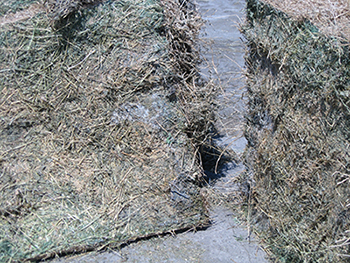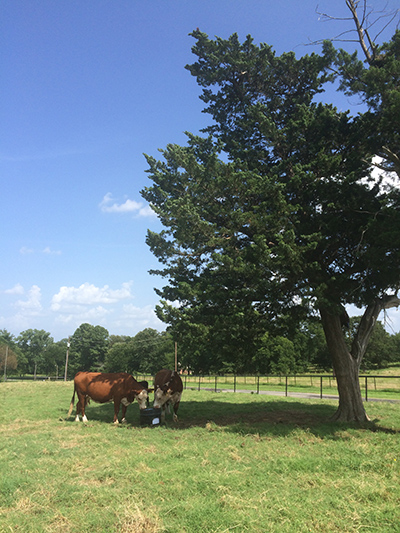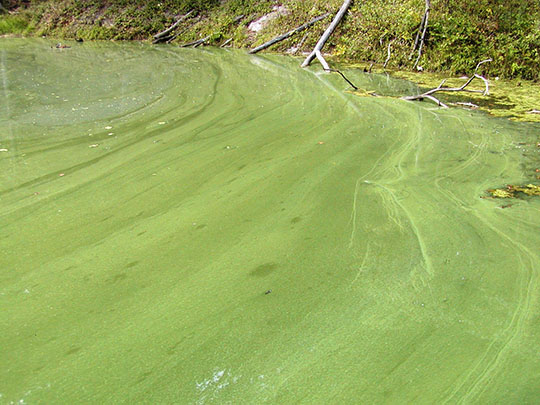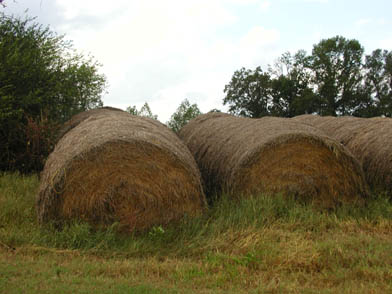As winter approaches we need to start thinking about feeding hay. This year has been very hit-or-miss in terms of rainfall. Those who got it, got more than enough. And those who didn’t, well... The problem is that most of the available hay is going to come from those areas that received ample rainfall and faced less-than-ideal harvesting conditions. Under those circumstances, mold becomes an issue.
The heat of the summer is upon us
July is here, and with it, some of the hottest days of the summer are just ahead of us. Self-fed intake of CRYSTALYX® Brand Supplements can be higher in the summer/warmer months. During the manufacturing process, CRYSTALYX® is packaged in to barrels at a temperature of approximately 150 to 175 degrees. At this temperature, CRYSTALYX® is very pliable, much like Play Doh® or thick cookie dough. As it cools, it becomes hard. Hardness is a primary factor in determining the self-fed intake of CRYSTALYX®. As you would expect, if CRYSTALYX® warms back up towards that 150 degree temperature, it will become softer again. That is just the nature of a Low-Moisture Block.
CRYSTALYX and equines
It’s true; the vast majority of CRYSTALYX® fed is used for the purpose of supplementing cattle, and beef cattle at that. However, CRYSTALYX® has had products labeled for all classes of equines for a long time having good results with satisfied horse owners using products such as Stable-lyx®. Within the CRYSTALYX® product line, there are actually four products that are labeled for equines; I’ll write here most about Stable-lyx® .
Can I feed CRYSTALYX cattle supplements to horses?
Many cattle producers also own horses and these horses are often in the same pastures as the cattle. In a perfect world, we’d offer equine supplements to the horses and bovine supplements to the cattle. However, in a co-pasture situation there is no practical way to keep these separate. As such, some choose a cattle supplement that all will eat.* In some cases this is harmless. In others it could be deadly.
Water quality falls during drought
When in a drought situation, thoughts turn immediately to pastures. However water quality can drop off just as quickly during extended periods of hot, dry weather. Water is often the forgotten nutrient. We take it for granted that if there’s water available in the pen or pasture, that the livestock are set.
Don’t throw away hay to improper storage
Hay is going to be more valuable than ever this year in light of the drought. For this reason, it is critical to maximize usable hay. Round bales are a popular means to harvest hay in many parts of the country. Proper round bale storage can make or break you. If your current storage method is allowing several inches of bale to rot, you might be surprised at how much hay is being wasted. The outer 4 to 6 inches, where most losses occur, make up a large percentage of the bale as shown in Table 1.
What is an organic trace mineral?
Nutritionists, along with producers, are always on the lookout for the next big thing to really improve livestock performance. In the case of nutritionists, we’re looking for products that pack a bigger nutritional punch per pound. Organic trace minerals are one of those advances that do bring a little more to the table. But what is an organic trace mineral?
Why is vitamin D added to mineral mixes and feeds
Vitamin D is often known as the “sunshine vitamin” because it is synthesized in response to exposure to sunlight. There are two major natural sources of vitamin D, cholecalciferol (vitamin D3) and ergocalciferol (vitamin D2). Vitamin D3 is synthesized in the skin of many herbivores and omnivores upon exposure to UV light from sunlight. Vitamin D2 is not found in green forages, but is formed when the dying leaves are exposed to sunlight. Thus, sun cured hay is a good dietary source of vitamin D2. Livestock utilize vitamin D3 much more efficiently than vitamin D2.
Supplement cost and supplement value: There’s a difference
While it’s true that Agriculture is enjoying some record or near record dollar receipts for commodity goods, input costs are rising and thus need to be managed. Everything costs more these days. From fuel to food, no one can escape all the rising costs.In this economy, we should all be challenged to find what the best buy is for the dollar and match purchases to our needs, goals and objectives.
Control weeds with grazing
Everyone I know hates weeds. I’ve spend countless hours with my grandmother pulling dandelions and crab grass, her most hated enemies. Pastures are no different. Cattle producers want to look over their pasture and see a sea of lush, green grasses and legumes. So what happens when the scene is darkened with brush and broadleaf weeds? Wouldn’t it be great if there was a way to utilize the weeds to maximize the available forage?




